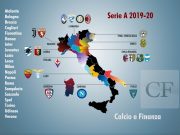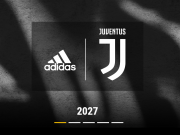There are rumors of a legendary anger of the famous players’ agent Mino Raiola that in front of the camera of the satellite channel SKY Sport blamed the malfunctioning of the internet systems as the reason why it was impossible to complete transfer market transactions.
“The Internet does not work here, we cannot do anything in this way” – said Raiola.
Yes, nowadays the Internet is a necessary requirement to complete transfer market deals. Since 2010, FIFA has introduced the International Transfer Matching System (ITMS or TMS), after a two-year study commissioned by the World Football Federation to figure out what the problems were to be solved.
What is the TMS?
The FIFA regulation highlights that TMS is an “information and data system on the Internet with the main objective of simplifying the process of international football transfers, able to improve the transparency and to streamline the information flows.” This is a mandatory procedure for transfers because without the use of the TMS a purchase is to be considered null.
Since 2010, the Internet is, therefore, fundamental. Previously, a player’s transfer was confirmed through the International Transfer Certificate (ITC), a paper document issued by FIFA after having checked the documents related to the transfer. Without the internet, however, faxes or couriers were used causing business delays or even cancellations of deals.
Simplification and transparency…these two key concepts led to the birth of the TMS, currently used by 211 federations and 6,500 clubs. Teams must enter information into the system such as the type of transfer, player’s personal data, the name of the agent, the remuneration of the attorney, the amount, and expiration of the payments, as well as the bank account numbers in order to ensure the transparency of the money involved in the transaction. Any other documents must also be translated into one of the four official languages of FIFA (English, Spanish, French, and German). If all the data matches and there is no doubt, the deal goes on with the federation of the transferring club that must confirm the player’s identity (if he is not already inside the system).

There are two more phases involved. In the first, the federation of the purchasing club requests the International Transfer Certificate. The federation of the transferring club has 7 days to provide it or reject the request with motivations. In the case that the federation of origin does not give its opinion within 15 days, the federation of destination may provisionally grant the transfer of the player to the new club. One year after the request of the ITC, the transfer will be definitive.
Anyway, as soon as the club’s league that buys the player receives what is often called “international transfer“, the player can start playing with the new team. The last step is to verify the payments. The buyer’s team must upload on the TMS the payments made. Once confirmed, the purchase is definitely concluded.
What is the TMS, the timing
This is not a very easy process. Every club has a dedicated person officially trained by FIFA to use the system. In the past, transfers were very long procedures that required a lot of time to be completed. Nowadays the situation is completely different. “If the parties are perfectly organized it takes between seven and ten minutes, “explained Mark Goddard, general manager of FIFA TMS in an interview with ESPN. After all, it is enough that the ITC request is processed by the end of the market session. Then the federations will be able to complete the transfer over the next few days. However, the required time is slightly higher than that indicated by Goddard. In 2015, it took on average 6 days and 12 hours, while the fastest time recorded was 16 minutes and 33 seconds (4 minutes and 1 second for free-agent players).







































